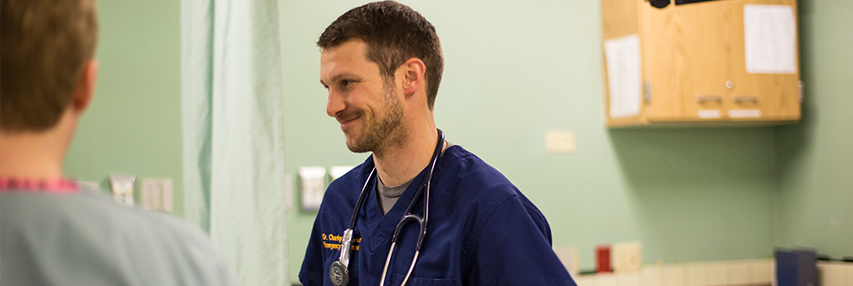Paying Off Medical School Loans: What Every Doctor Needs to Know
Most people think that doctors have it pretty easy when it comes to paying off medical student loans. Sure, they rack up six figures worth of student debt—but their outsized salaries should help them decimate those loans in no time (not to mention set them up for life).
However, if you’re a doctor, you know the reality of having medical school loans is more complicated than people might think. For one thing, you don’t start making “student loan payoff money” until you’re out of residency, which—depending on your focus—can take 3, 4, 5, even 10 years. During that time you have to juggle a big student loan balance with a relatively small paycheck, learn the nuances of various medical school loan repayment programs, and stay on top of changing student loan legislation that can impact your payments or potential student loan forgiveness.
It’s challenges like this that inspired Jim Dahle (MD, FACEP) to launch his popular blog, The White Coat Investor, six years ago. After a string of bad experiences with financial professionals, Dahle realized that doctors need resources and education customized to their specific financial challenges. “I watch doctors make the same money mistakes I made over and over again,” says Dahle, whose site receives nearly 600,000 views per month from doctors seeking financial information relevant to them.
Doctors and Medical School Debt
The White Coat Investor covers a variety of topics, but the subject of medical student loans is always in rotation. We asked Dr. Dahle to share what he thinks every doctor should know about paying off medical school loans.
Q: Why is paying off medical school debt more complicated than people think?
A: Up until a few years ago, the options for doctors with student debt were fairly limited. You used income-based repayment (IBR) to make lower payments on federal loans during residency, then when you got out you made full payments until your debt was done—and that was that. Your biggest decision was whether or not to work for a 501(c)(3) organization in order to take advantage of Public Service Loan Forgiveness (PSLF), where your federal loans are forgiven after 10 years.
But today there are a number of options for med school borrowers, and each choice affects how much you’ll spend on interest, how quickly you’ll pay off loans and whether your loans can be forgiven. Also, some of these variables are affected by student loan legislation, which is constantly evolving. It’s a lot for doctors to stay on top of.
Q: How have things changed?
A: A few years ago, companies like SoFi came on the scene and offered the option to refinance student loans both private and federal. Doctors coming out of residency could cut the rate on their loans and save a significant amount on interest. But the decision was still pretty simple—you’d either stay in IBR and go for PSLF or you’d apply to refinance federal loans (refinancing private loans is usually a no-brainer either way).
Then, some lenders started to offer refinancing for medical residents, banking on their eventual increase in income. This moved up the decision point for refinancing, because if you’re not planning to use PSLF, you may as well refinance and start saving money as early as possible.
But last year, the government expanded its income-driven repayment program with the launch of REPAYE (Revised Pay As You Earn). Under REPAYE, the government forgives up to 50% of interest accrued on loans while in the program, which dramatically lowers the effective interest rate for residents—lower than the typical refinance rate. So now, medical residents have to weigh PSLF, refinancing and REPAYE when making decisions about student loans.
Q: You emphasize PSLF, but what about getting loan forgiveness through REPAYE or the other income-driven repayment plans?
A: These plans don’t make sense for most doctors after residency because their income is too high—you’d have to be a really low paid doctor and/or have a massive debt load for the payment discount to work, and you only get the loan forgiveness after 20-25 years in the program. Most docs have paid their debt off well before then.
Q: How common is it for doctors to qualify for public loan forgiveness?
There are tons of jobs that qualify—if you work in academia, a non-profit hospital, public health, the military, etc. It’s not for everyone, but it’s not a small number—I would estimate that 15-20% of MD positions are considered 501(c)(3) and therefore eligible for PSLF. In some areas it may even be a majority of positions.
Q: How does student loan legislation affect medical school loan repayment programs and forgiveness options?
A: Besides the REPAYE example, the biggest thing to keep an eye on is legislation around public loan forgiveness. Starting next year, the first participants in the program will see their loans forgiven (after 10 years of consecutive payments while working in a public service profession). Soon after, I imagine we’ll start seeing headlines like “Doctors Receive $400,000 in Loan Forgiveness at Taxpayers’ Expense.” I don’t know how many stories like that will have to run before the government changes the program.
Now, if they do make changes, will they grandfather in the current participants? I would hope so, and there’s precedent for that, but there are no guarantees. My best guess is that the program won’t last forever, at least not in its current state. The Obama Administration already proposed a $57,000 cap two years ago, which would’ve made it a non-starter for most doctors.
Q: What’s the biggest financial mistake you see doctors make?
A: It’s not any one mistake, necessarily, just a lot of the same ones. Most doctors grow into their income too fast. They get a huge income bump after residency and don’t have a plan for how to spend and invest it wisely.
For example, if you can continue to live on a lower budget for a couple of years after your post-residency pay increase, you could make a huge dent in your debt and set yourself up for greater financial success. It may not be the most appealing option, but in the long-term, it can have a big payoff.
SoFi Lending Corp. or an affiliate, NMLS #1121636. Terms and conditions apply. Please see SoFi’s eligibility and licensing page for more details.
Share This With A Doctor Suffering From Student Debt






So when the loan sharks have finished squeezing every cent from the medical students, they are now talking the parents into signing up for loans for the kids. Then when the parents are on their death beds they can sign over their life insurance to these same lenders to repay the loans. Its a wonderful world if you are a loan shark. Where are you Berni ??
This whole process is much too complicated and harms both the patient public, the taxpayer, and the physician.
Medical student debt is a policy of choice and not of necessity as other more advanced countries have shown.
is there any discount offered by sallie mae if i borrow all the funds from a family member to pay them off?
“Even 10 years”??? Try way more than 10 years.
Isn’t the loan forgiveness in 10 years park of the MP note that we all sign. The can change it/cap it for future loanees but legally isn’t the gov’t obligated to pay based on the contract. That’s like saying oh well we will only forgive this…. well then I guess I will only pay this, forget the rest. There will be court hearing on it and people will sue.
RE:Paying Off Medical School Loans: What Every Doctor Needs to Know | SoFi Валок Wil-Rich Карасук